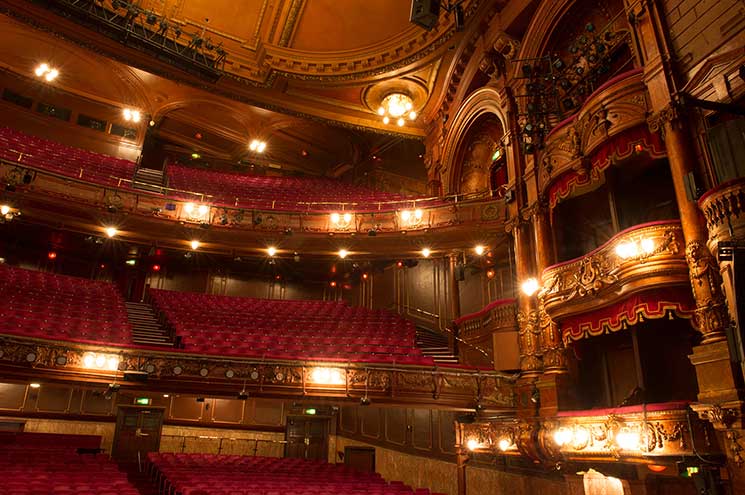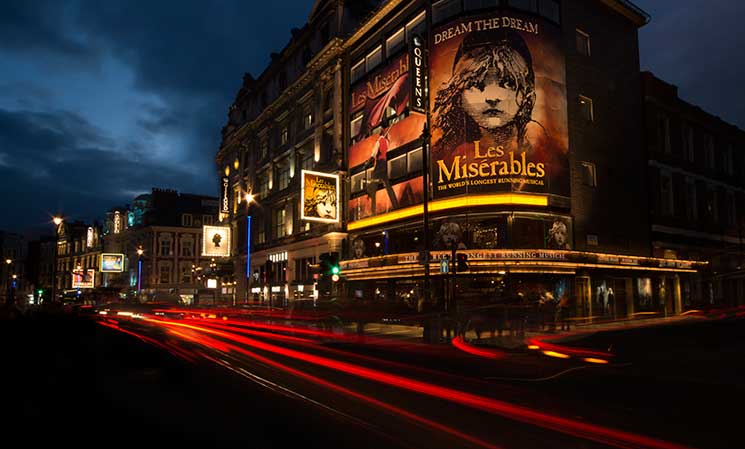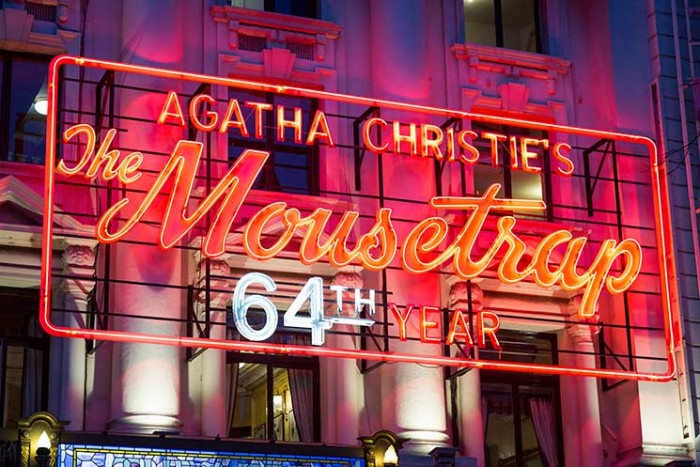Curtain up: the best of London theatre this season
London’s theatre scene is one of its crowning glories. Sally Hales explores what’s on offer at the capital’s beautiful and historic theatres in the months to come…
A visit to the dazzling lights of the West End’s Theatreland, which loops around Leicester Square, Covent Garden and along the iconic Shaftesbury Avenue, is an essential part of soaking up the capital’s sultry after-dark spirit.
London’s huge concentration of theatres – around 40 in the West End alone with many more notable outposts further afield – speaks of a long love affair with the stage, which shows no signs of waning. Here, we sample the best shows at the most fascinating and historic theatres this season.
What’s On
Shakespeare’s Globe, Bankside
In the Sam Wanamaker Playhouse, family show The Little Matchgirl and Other Happier Tales, inspired by Hans Christian Andersen’s tale, promises a spellbinding world of magic and mystery until 22 January 2017.
The Playhouse Theatre, Northumberland Avenue
Stephen Daldry’s multi-award winning production of JB Priestley’s sinister classic An Inspector Calls, with set design by Ian MacNeil, returns to London for a limited run until to 4 February 2017.
Theatre Royal Drury Lane
The Charlie and Chocolate Factory musical is choc-full of fantastical treats and stunning effects. Booking until January 2017.
London Palladium, Argyll Street
Panto is coming home this year with a star-studded and big-budget Cinderella running from 9 December 2016 to 15 January 2017.
The Old Vic, The Cut
Daniel Radcliffe (Harry Potter) stars in modern classic Rosencrantz and Guildenstern are Dead by Tom Stoppard from 25 February to 29 April 2017 and Star Wars’ star John Boyega stars in Woyzeck from 6 May to 24 Jun 2017.
Queen’s Theatre, Shaftesbury Avenue
Cameron Mackintosh’s timeless testament to the human spirit, Les Misérables, has been seen by 70m people around the world and is booking until March 2017 in London.
Her Majesty’s Theatre, Haymarket
In its 30th year at the theatre, with no signs of ageing, legendary love story The Phantom of the Opera offers the kind of stage spectacular London is famous for delivering. Look out for the plummeting chandelier. Booking until 4 March 2017.
Britain’s first purpose-built playhouse, “the Theatre” was built in Shoreditch in 1576 and, a few years later, a young actor named William Shakespeare would join its resident troupe. Although no theatres survive from this first flourishing, we can still experience the golden age of Elizabethan and Jacobean drama at the reconstructed Shakespeare’s Globe on Bankside. It’s almost 20 years since it opened near the site of the original Globe Theatre – in which Shakespeare was a shareholder – and in that time the Globe has pulled off the enviable feat of becoming both a must-see visitor attraction and a serious theatrical force.
Stand in the open-air yard for a joyous taste of times gone by, where you are welcome to hoot and holler at the Bard’s brilliant words.
Artistic director Emma Rice’s Wonder season has brought yet more critical acclaim with raucous, open and inclusive performances. Imogen, a “renamed and reclaimed” version of Cymbeline, and a vibrant, multi-cultural A Midsummer Night’s Dream wowed the crowds over the summer and the dramatic delights move indoors for the winter to the candlelit Jacobean-style Sam Wanamaker Playhouse, including family show The Little Matchgirl and Other Happier Tales. And – one for the diaries – look out for Othello in spring 201. The Summer of Love season in 2017 is hotly anticipated, so get your tickets asap.
The English Civil War closed the theatres in 1642. But, 18 years later, when King Charles II was restored to the throne, London’s theatre scene roared back to life and, during the 18th century, play-going flourished as a popular pastime. Boasting the longest continuous theatrical traditional in the UK, London’s oldest theatre, the Theatre Royal Drury Lane, can trace its history back to this time. First built in 1663 under patent from Charles II, this is where the king caught his first glimpse of his famous mistress Nell Gwynn, who made her stage debut here in 1665.
Today’s Grade I-listed building is the theatre’s fourth iteration on the site, opening in 1812. Following extensive refurbishment, it can also claim to be one of the city’s most historically accurate and luxurious theatres too.
With a capacity of more than 2,000, the Theatre Royal Drury Lane is also one of the largest, capable of staging the most spectacular shows. It’s currently home to a magical production of Roald Dahl’s Charlie and The Chocolate Factory with Bond director Sam Mendes at the helm; indeed the theatre’s vast size lends itself perfectly to the show’s jaw-dropping effects – including a spectacular Chocolate Room and an amazing glass elevator.

The largest commercial theatre of them all is the London Palladium, which seats a whopping 2,286. Its size and beauty is a testament to another glittering era on the London stage: variety. The iconic Frank Matcham-designed theatre opened on Boxing Day 1910 with the first “grand variety bill” presenting an ever-changing programme of music-hall style entertainment with a huge seating capacity of thousands at the time.
Music halls were hugely popular at the turn of the century but had a rather lowly reputation and the Palladium endeavoured to close this gap with more middle-class offerings. When it opened, it was described as being “one of the most magnificent places of entertainment in the world,” and audiences flocked to see the great and the good of stage and screen – who queued up to top the bill – at the “Ace Variety Theatre of the World”, as well as the Palladium’s wonderful pantomimes. This year, the London Palladium has returned to its variety roots with a programme of one-off concerts and events, along with the return of a festive spectacular as a sparkling Cinderella looks set to wow the Christmas crowds.

Away from the West End, the handsome Old Vic – as it is now known – first opened in May 1818 south of the River Thames near Waterloo. In 1912, English theatrical producer and manager Lilian Baylis was appointed the theatre’s manager and her tireless work at the Old Vic and Sadler’s Wells would lead directly to the birth of not only the National Theatre but also the English National Opera and the Royal Ballet. The Old Vic Shakespeare Company was formed here in 1914 and, over the next decades, Britain’s acting greats would regularly grace the stage. And, when the decision was made to create a National Theatre, the Old Vic became its home, with Sir Laurence Olivier at the helm, until the 1976 opening of the purpose-built National Theatre on the South Bank. The exciting 10-year tenure of Kevin Spacey as artistic director may have recently come to a close, but the Old Vic continues its mission to be at the forefront of the theatre world. In 2017, it’s the place to see film stars tackle the classics with Harry Potter’s Daniel Radcliffe taking on Sir Tom Stoppard’s Rosencrantz and Guildenstern are Dead and Star Wars’ star and London-boy John Boyega in Woyzeck on the bill.
Neither the oldest nor the biggest, the 550-seat St Martin’s Theatre opened in 1916 in wartime London and, while its claims to fame are rather quieter, they are no less fascinating. One of very few London theatres still in private ownership, St Martin’s was built for Lord Willoughby de Broke, grandfather of the current owner, the Rt Hon Lord Willoughby de Broke, the 19th Baron.
But it is, perhaps, most famous as long-time home of Agatha Christie’s The Mousetrap, the longest-running show in the world, which first opened at the adjacent Ambassadors Theatre in 1952 before transferring to St Martin’s in 1974, where it has played ever since.
Recent interior and exterior refurbishment means the theatre is a delight to visit boasting restored woodwork, new upholstery, silk wallpaper and stage curtains bearing the Willoughby de Broke family coat of arms.In the main foyer is a sign stating the exact number of the performance of The Mousetrap you are about to see (there have been at least 26,000). Remember to make a note of it in your programme for posterity.




